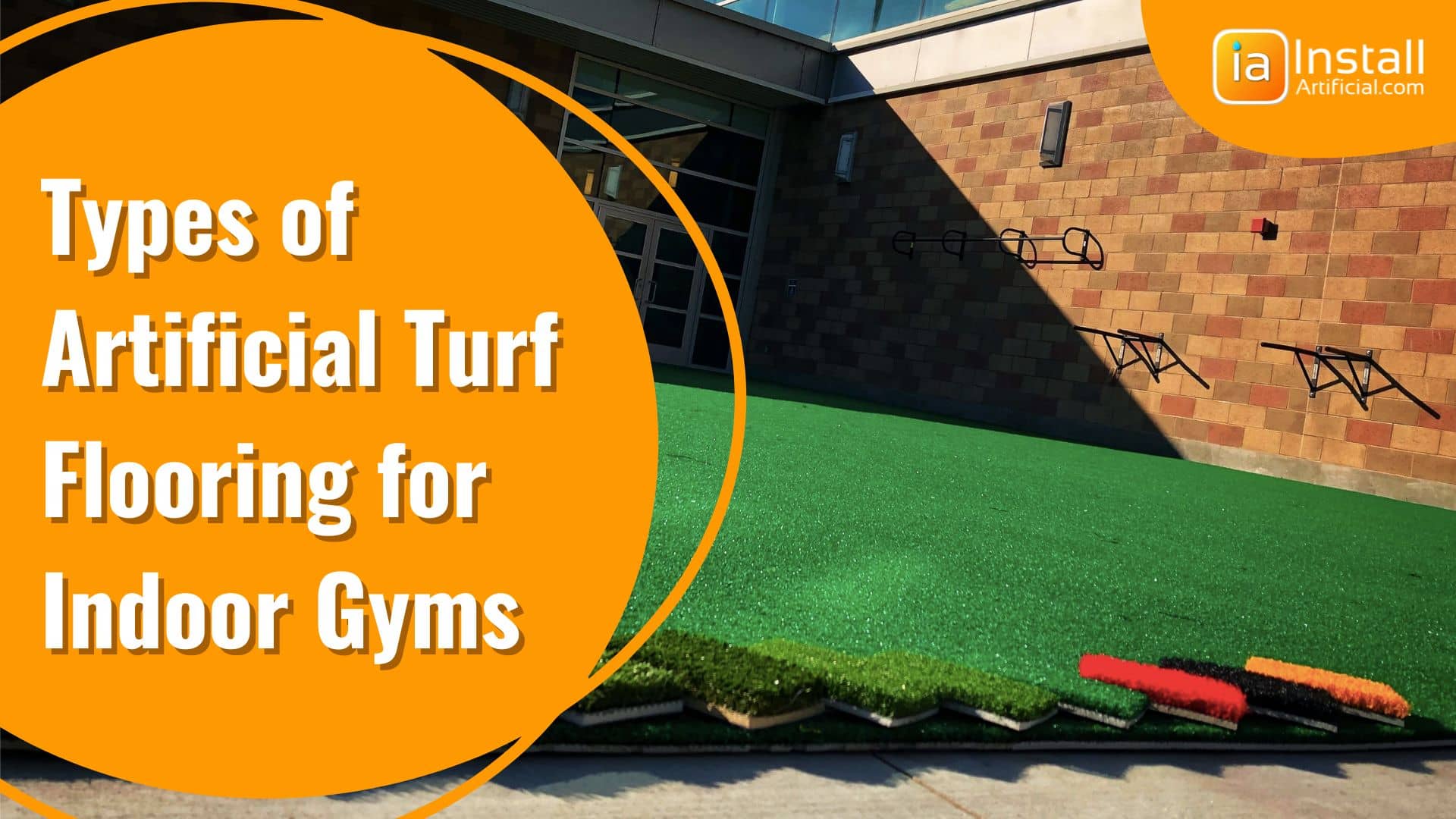
When it comes to creating a top-notch gym, choosing the right flooring is crucial. With so many sports turf options available, it can be overwhelming to decide. Avoid...
What is the best gym flooring? You'll be surprised to learn that the answer isn’t as obvious as you might think. We will break it down for you with an honest opinion, just like your trainer does. You will learn when rubber is better than turf and vice versa. There is no room for mediocracy when you are on a mission to a better you.
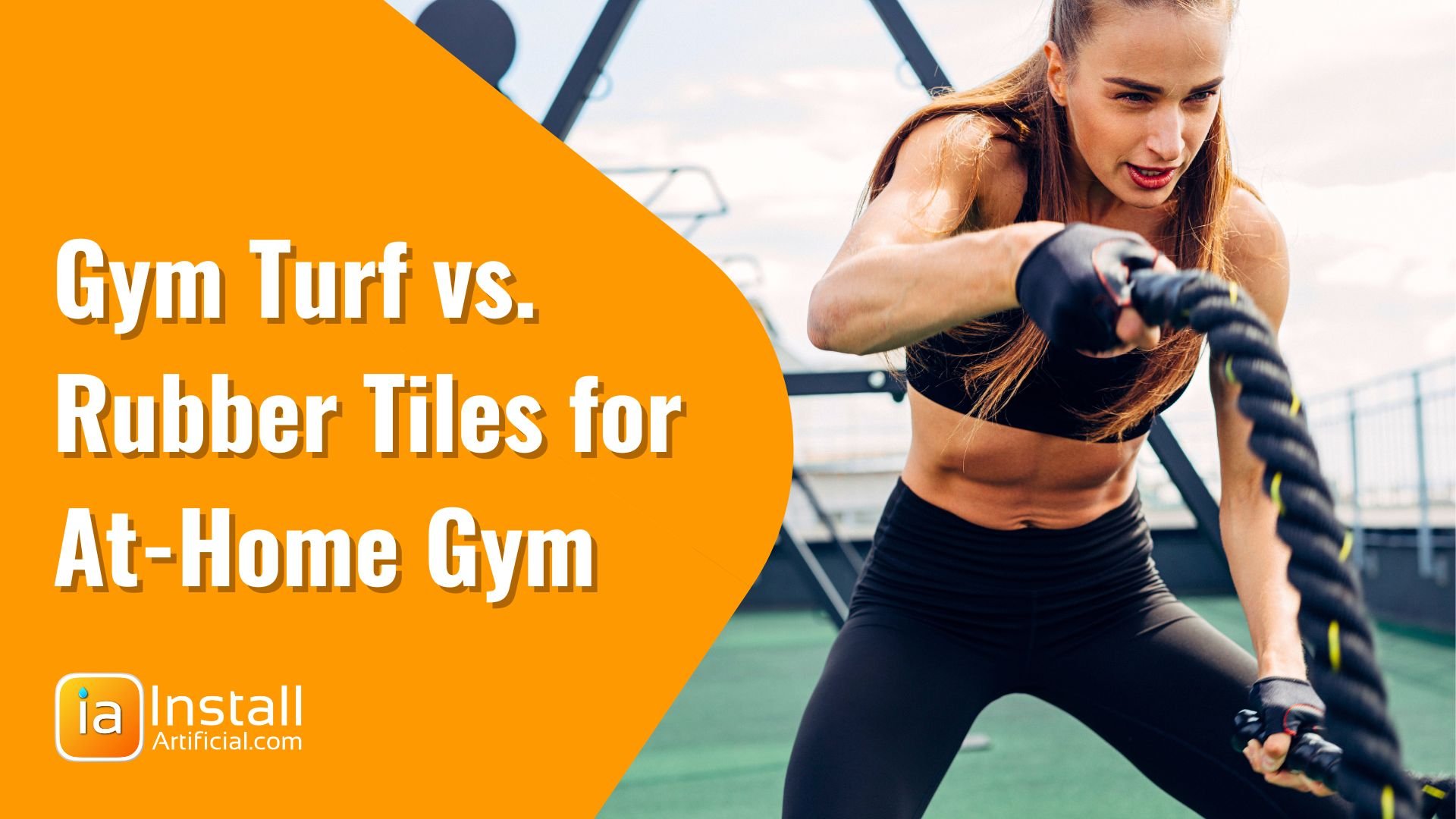
When it comes to choosing home or commercial gym flooring, there are many options available, each with its own advantages and disadvantages. Two popular choices are artificial gym turf and rubber tiles. Both have their own unique characteristics, and the decision between the two depends on various factors, including the type of sports and workout activities, the frequency of use, and the budget. In this article, we will explore the differences between artificial sports turf and rubber flooring for indoor gym to help you make an informed decision.
Gym turf, also known as sports turf, is made from synthetic fibers that are designed to look and feel like natural grass. The fibers are typically made from materials such as nylon, polyethylene, or polypropylene and are woven into a backing material that is then coated with a layer of rubber or sand to provide cushioning and support. Artificial sports turf is commonly used for outdoor sports fields, but it can also be used for indoor or garage gym flooring when selecting a lower pile height.
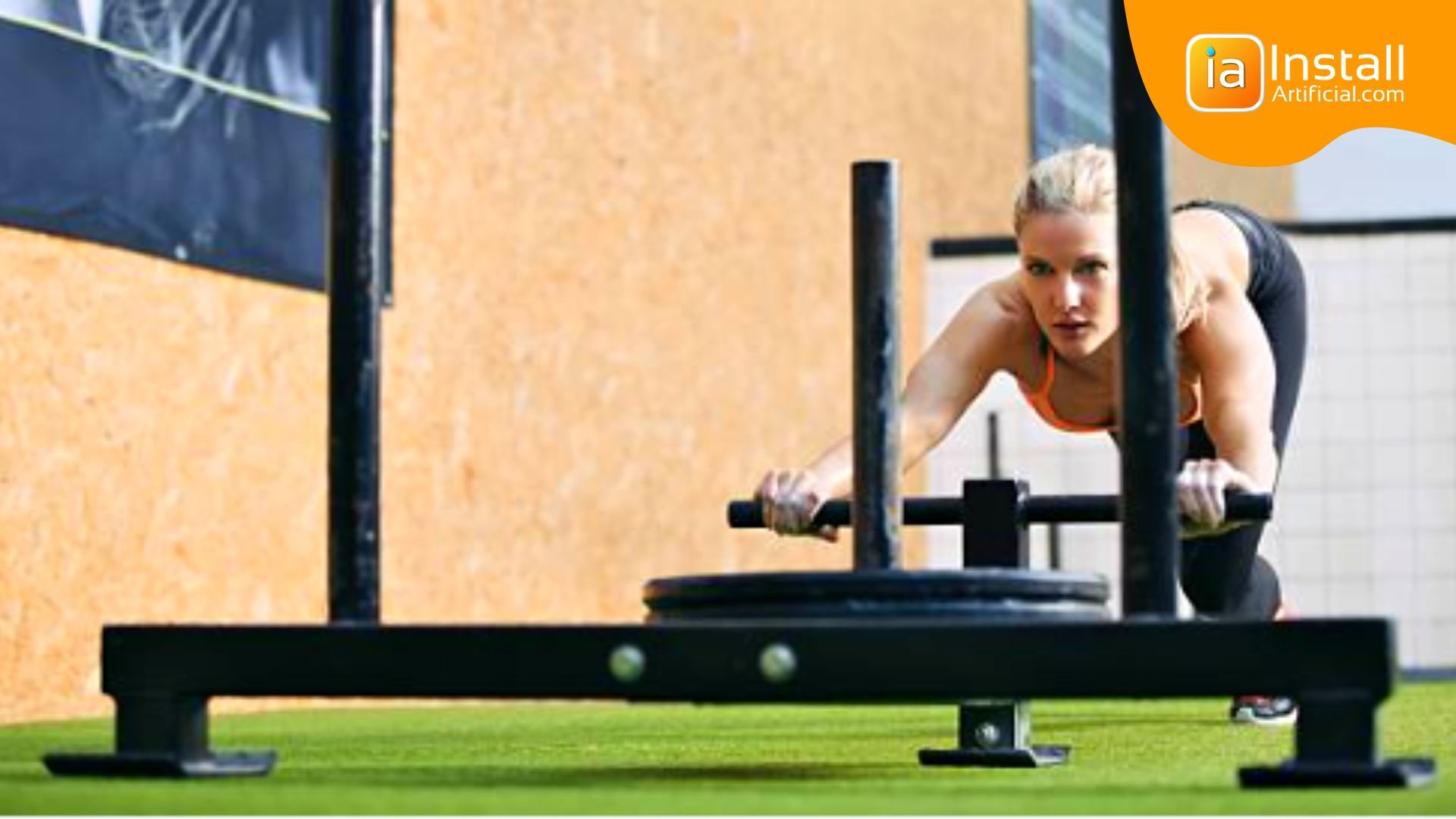
One of the biggest advantages of artificial sports turf is that it requires very little maintenance if you choose the right turf for your space. Unlike natural grass, which needs to be watered, mowed, and fertilized regularly, sports turf in commercial gyms only needs to be swept and occasionally brushed to keep it looking good. You can also vacuum this gym flooring! Gym turf is also easy to install and DIY friendly, you can dry lay the product over the existing floor in your workout space if there's heavy exercise equipment to weigh it down.
Artificial sports turf is highly durable and can withstand heavy use without showing signs of wear and tear. This heavy duty flooring option can hold up to heavy weights, strength training, and other high impact workouts. This makes it a great surface for sports facilities or home gym floors with high traffic.
Sports turf can bring a pop of color to your home gym floor. Whether you want to compliment an existing theme or just simply add some vibrant colors to get you through your tough workouts, turf is the perfect gym flooring option.
Artificial turf is designed to be safe for athletes and homeowners to work out on, with a cushioned surface that reduces the risk of injuries by providing shock absorption. By laying custom gym turf over hardwood floors or the existing flooring underneath, you'll instantly have a softer surface. Opt for padded gym turf for even more shock absorbent features! These factors make sports turf a great solution for home gym flooring. It also has a consistent texture that reduces the risk of tripping and offers a slip resistant surface.
Artificial grass is harder to clean. Because it simply looks and feels like a carpet. You will have to clean it with a rotary-head vacuum cleaner. You can also wash it with cloth and apply sanitizer. Rubber is slick and easy to clean.
Artificial turf can be expensive to install in home gyms, but especially for large spaces or sports facilities. Gym turf costs approx. $2.50-$7 per square foot, depending on the quality of grass selected. However, the low maintenance requirements of artificial turf can offset some of the upfront costs over time.
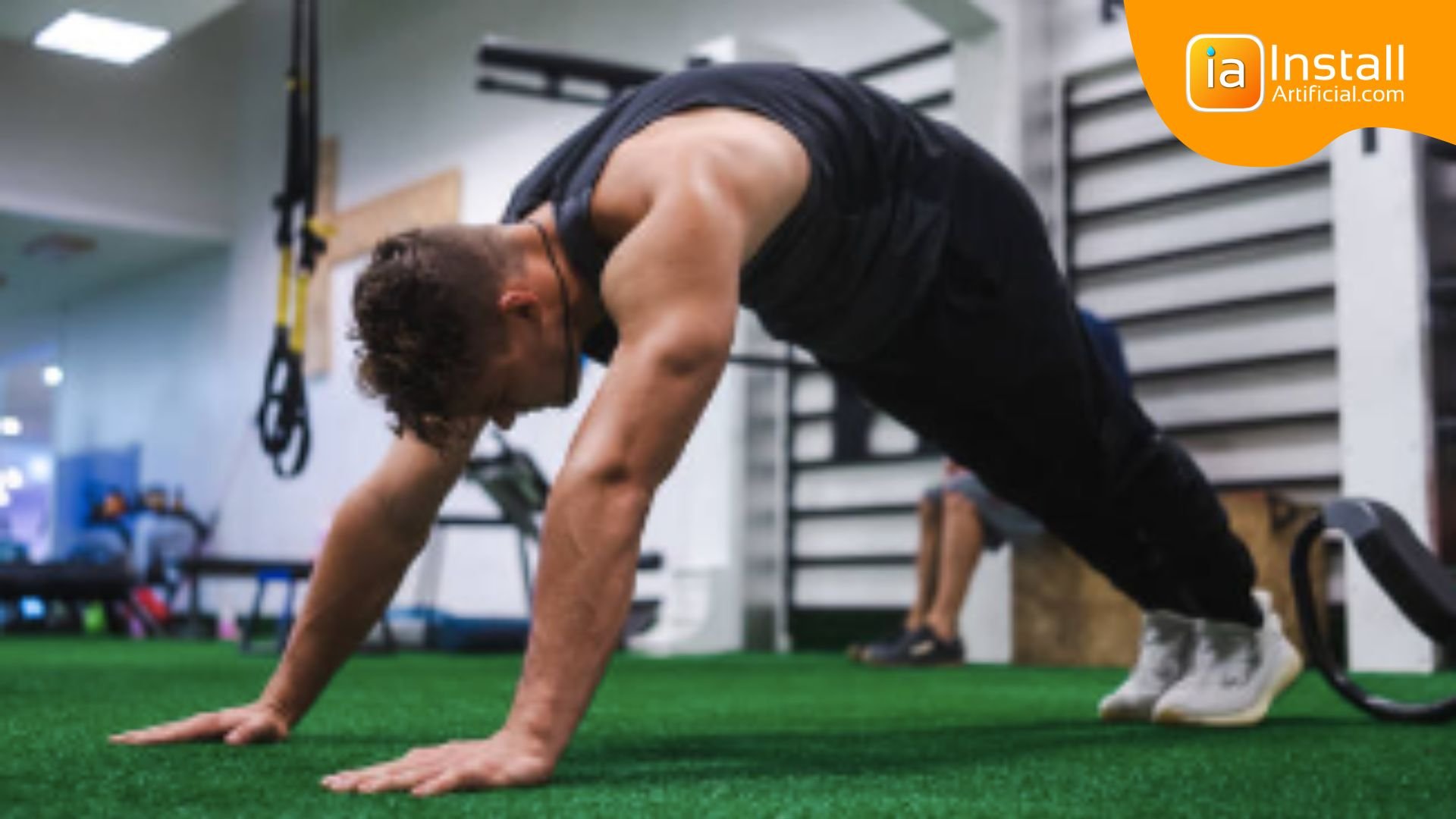
Some people are concerned about the environmental impact of artificial turf in home or garage gyms. This is because sports turf is made from synthetic materials that do not decompose. However, many modern artificial turf products are designed to be eco-friendly and recyclable. Also, the easy installation process of gym turf does not require infill. This makes it much easier for the turf to be reused in other areas to lengthen its lifespan.
When deciding what material is best for your workout, turf may not be the best choice for floor exercises such as burpees and sit-ups. Nylon turf in particular can be quite rough, so we would generally only recommend using Nylon to push and pull sleds, for weightlifting, and in sunny areas.
Rubber flooring is a popular choice for at-home and commercial gyms because they provide a cushioned surface that is easy on the joints and can withstand heavy use. This type of surface can come in the form of rubber flooring tiles, or in rubber flooring rolls. Rubber gym tiles are typically 2'x2' interlocking tiles that are 5-10 mm thick.
Rubber floor tiles are typically made from recycled rubber, which can make them an eco-friendly choice for home gym flooring options. Commercial gyms love using rubber flooring for the simplicity of cleaning. Residential users like rubber for the simplicity of the installation. Rolled rubber looks and feels better than rubber tiles, but are much harder to install and requires a perfectly smooth surface.
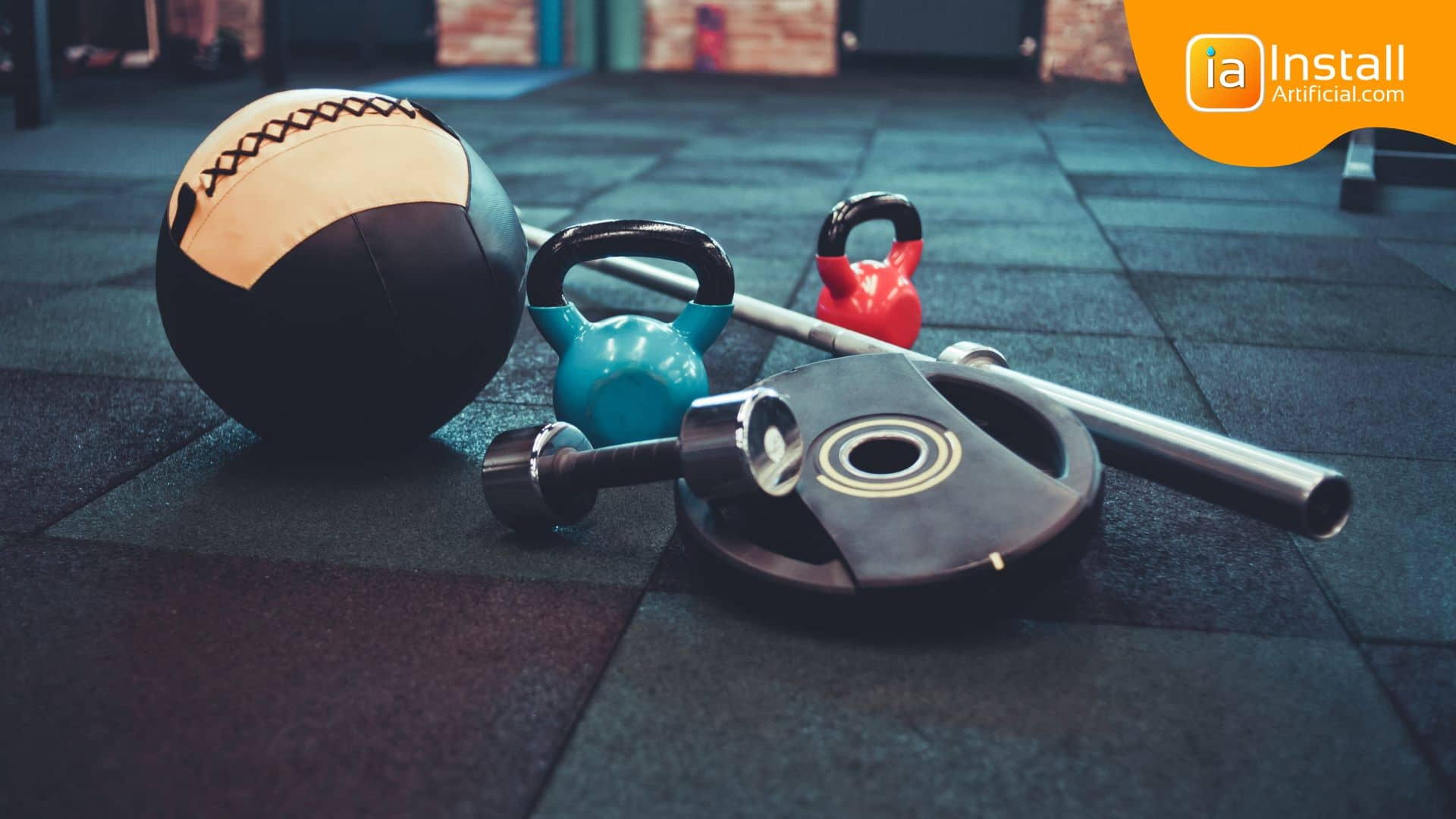
Rubber floor tiles are highly durable and can withstand heavy use without showing signs of wear and tear. This makes them excellent gym mats for sports facilities that see a lot of traffic and require everyday cleaning. Also rubber works great for heavy weights of more than 200 lb.
Rubber tiles provide a cushioned surface that reduces the risk of injuries from falls and other accidents. Rubber has a consistent texture that reduces the risk of slipping or tripping. This thicker flooring option also provides sound absorption from heavy equipment if installed correctly.
Rubber flooring tiles are made from recycled rubber, which makes them an eco-friendly choice for both home gyms and commercial facilities. They are also recyclable, which means they can be reused or repurposed at the end of their lifespan.
Rubber flooring tiles are easy to install and can be cut to fit around obstacles and irregular shapes. This makes them versatile gym floor mats. Rubber flooring products that are interlocking tiles are even more simple to install.
Rubber is considered a cancer-causing substance. Many articles claim that rubber surfaces are directly related to cancer among sportsmen. We cannot clearly state the cause and effect, but this has been a topic of conversation for years. Do your own research to make an informed decison.
Some rubber floor tiles and rubber rolls can have a strong odor when they are first installed. This odor may linger, creating discomfort during workout sessions. In most cases, this smell never goes away completely.
Rubber floors are hot when outside and cold when inside. They transfer temperature much more than artificial turf due to a dense material structure. If you're looking for a barefoot home gym experience, rubber may not be for you.
Rubber tiles can be more expensive than other types of flooring, especially if they are made from high-quality materials. Rubber tiles will also be more expensive than rolls of rubber flooring, costing between $12-40 per tile, depending on the material selected.
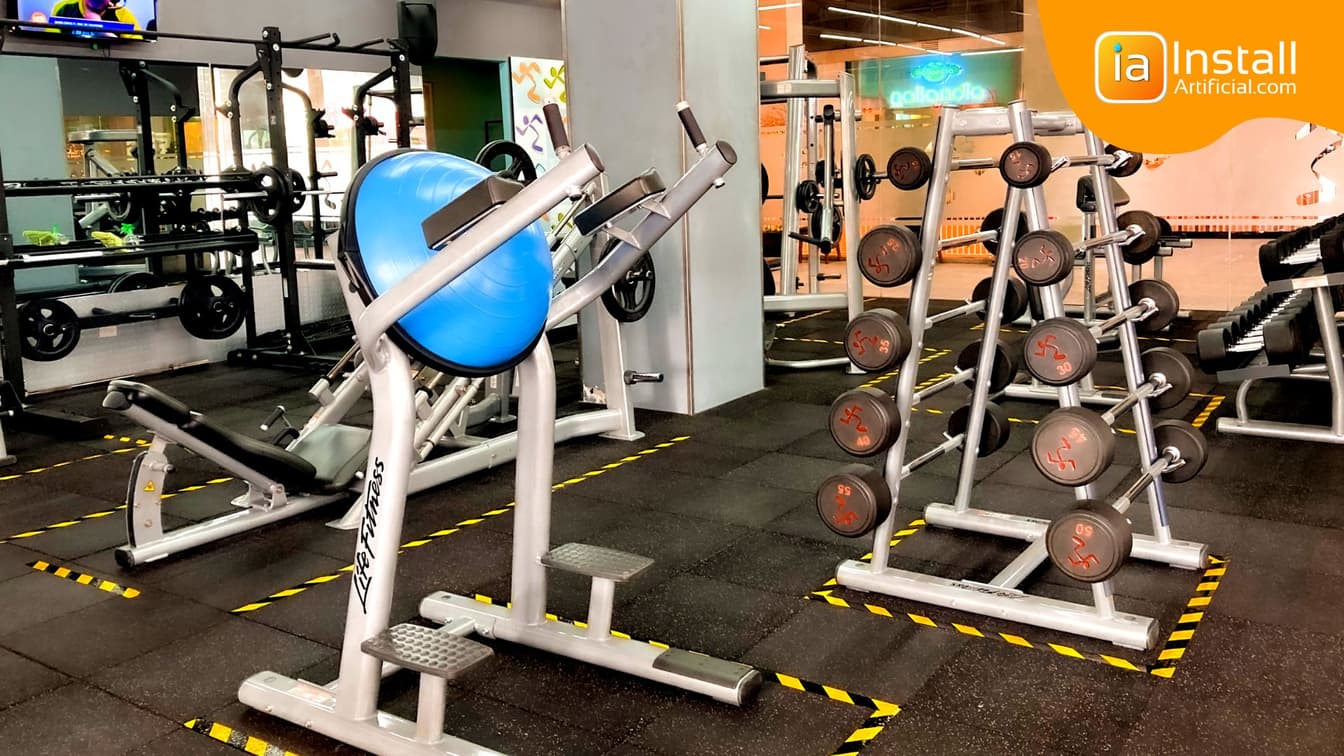
While the rubber gym tiles themselves are water resistant, water and other liquids can seep through to the underlying surface thanks to openings between rubber tiles. This can cause mold and bacteria growth over time if not consistently tended to.
The type of activities that will take place on the flooring is an important consideration when choosing between artificial sports turf and rubber tiles. Artificial sports turf is ideal for high-impact workouts, while rubber gym tiles may be best suited for floor exercises and yoga.
Additionally, artificial sports turf is typically used for sports such as soccer, football, and baseball, while rubber tiles are more commonly used for indoor sports such as basketball and volleyball.
Artificial sports turf requires very little maintenance, such as the occasional brushing or vacuuming. However, rubber tiles in gyms may need to be cleaned regularly to maintain their appearance and performance. You'll also find that liquids can seep through the cracks where the rubber tiles interlock.
Both artificial sports turf and rubber tiles are highly durable and suited for indoor use. They both also have pros and cons regarding use indoors and should be selected based on the activity and budget. For outdoor spaces, artificial sports turf is much more desirable and is better suited for high-traffic areas and commercial facilities. However, rubber tiles are not as durable when used with agility trainings, sleds, or crossfit.
Both artificial gym turf and rubber gym tiles are designed to provide a safe playing surface. These gym flooring options will offer shock absorption, traction, and non-slick surfaces. Both artificial grass for workouts and rubber tiles can come in various thicknesses for added joint support. There are also turf underlayment pads to make your gym surface as shock absorbing as possible in high-impact areas. It is worth considering however, that rubber fields may be linked to an increased risk of cancer.
Gym turf can be more expensive to install, but it has lower maintenance costs over time. Rubber tiles may be less expensive to install upfront, but without proper care and maintenance they will require replacement much more often.
When comparing the difference between rubber tiles and gym sports turf for home gym, a big factor in your decision can also be the installation process. Check out the practices for installation in both cases below!
There are three primary ways to install gym turf rolls, each a simple process and with its own advantages and disadvantages.
Loose Lay: The most straightforward is to simply lay the tiles directly on the floor; no glue or tape is required for this approach. While it's not usually recommended due to possible shifting, heavy exercise equipment can help keep the turf in place.
Double-Sided Tape: Apply double-sided tape around the perimeter of each turf roll to prevent any movement during exercise. This tape is durable, but may not secure the turf as well as a glue down.
Glue Down: Spot gluing down individual rolls can make sure they remain stationary, ideal for commercial gyms - although this method makes it harder to remove or reuse the product elsewhere down the line. Glue down method is the most secure, but may stain the surface underneath.
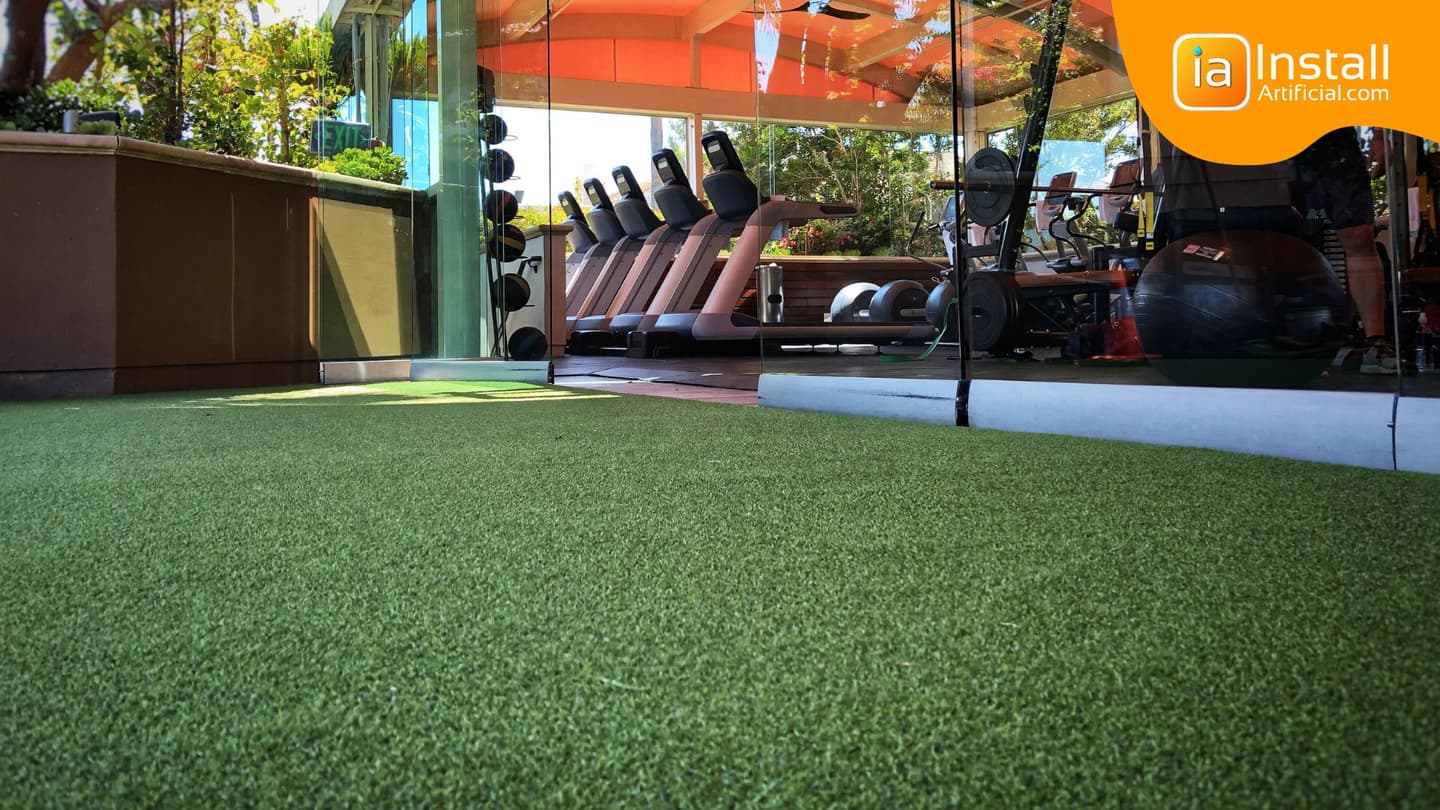
The beauty of interlocking rubber tiles is that the installation is a breeze! While it may be tedious work, there's not much to it. Simply connect the tiles along your surface as needed. These foam-like gym tiles can also be cut to fit tricky angles and corners. As expected, rubber gym tiles are also very easy to remove.
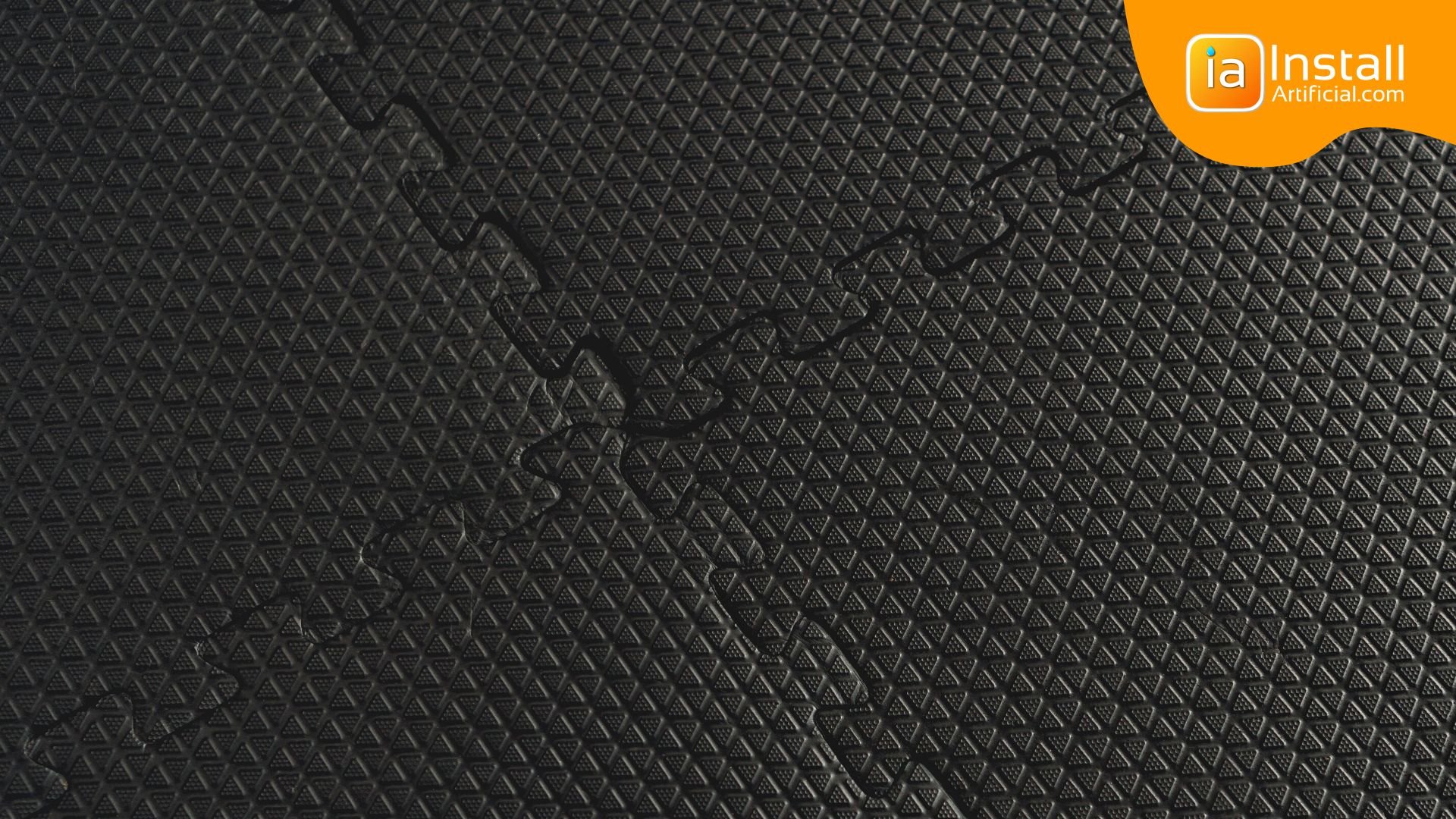
Commercial gyms love to combine both rubber and gym turf to create a multi-functional space. Rubber is great for heavy-lifting zones and walking areas. Turf areas are great for yoga, CrossFit, sleds, and agility training.
Home gym flooring selection will depend on your primary activities. If you are using heavy weights often, you may want to opt for thick rubber tiles. Most homeowners prefer turf gym flooring to achieve an easy, smooth floor that feels warm and soft and provides a good grip for stretching.
Ultimately, when trying to decide between sports turf and rubber tiles for your gym, there are many elements to take into account. Think about the type of activities that will be happening on the flooring, how often it will be used, and your allotted budget. It's essential that you consider all the factors discussed in this article before selecting the ideal product for your home gym. Start shopping for the materials below!

When it comes to creating a top-notch gym, choosing the right flooring is crucial. With so many sports turf options available, it can be overwhelming to decide. Avoid...
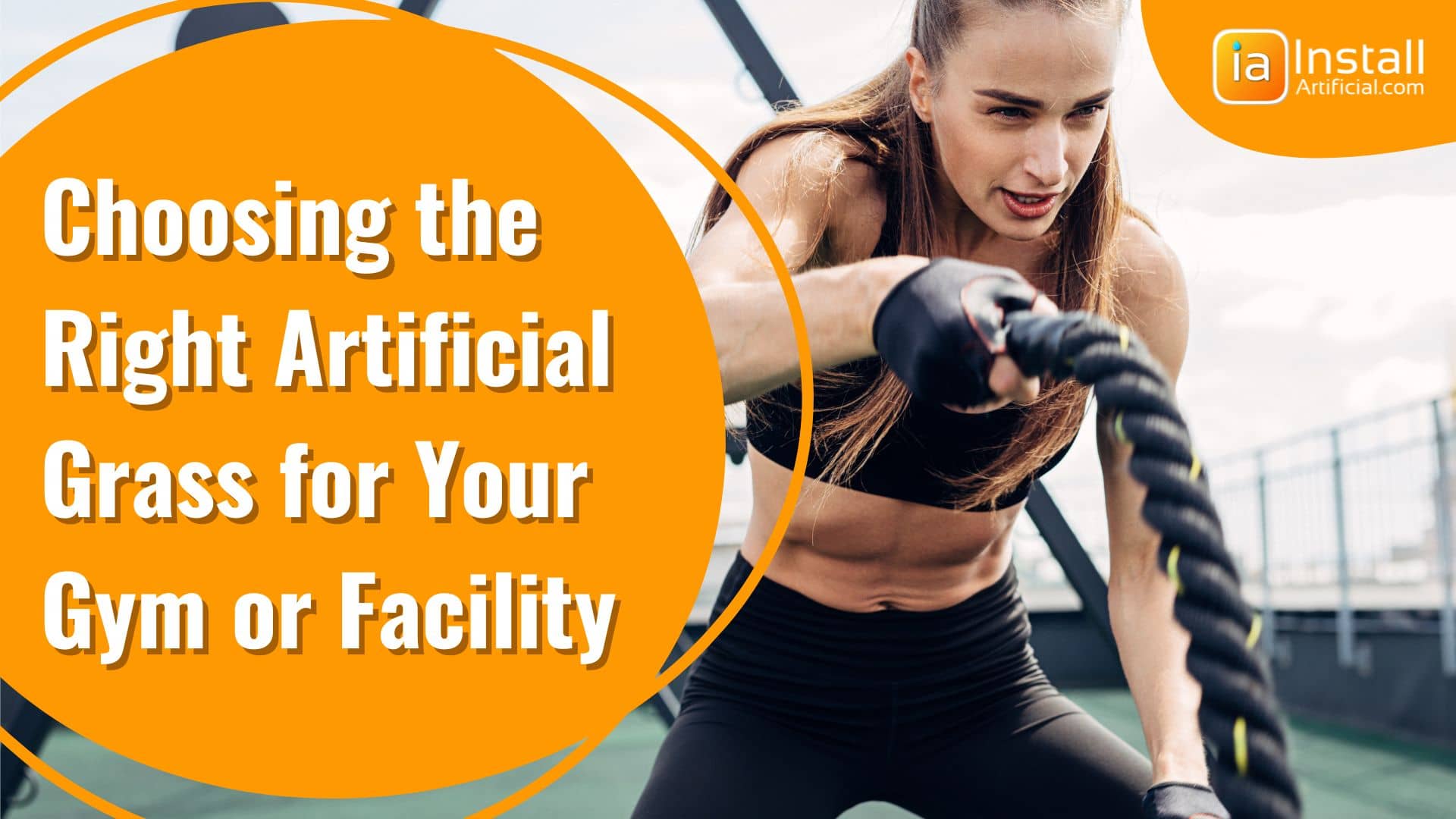
Artificial grass has become a popular natural grass alternative in landscaping, but turf is also the perfect flooring for gyms and fitness facilities. The low...